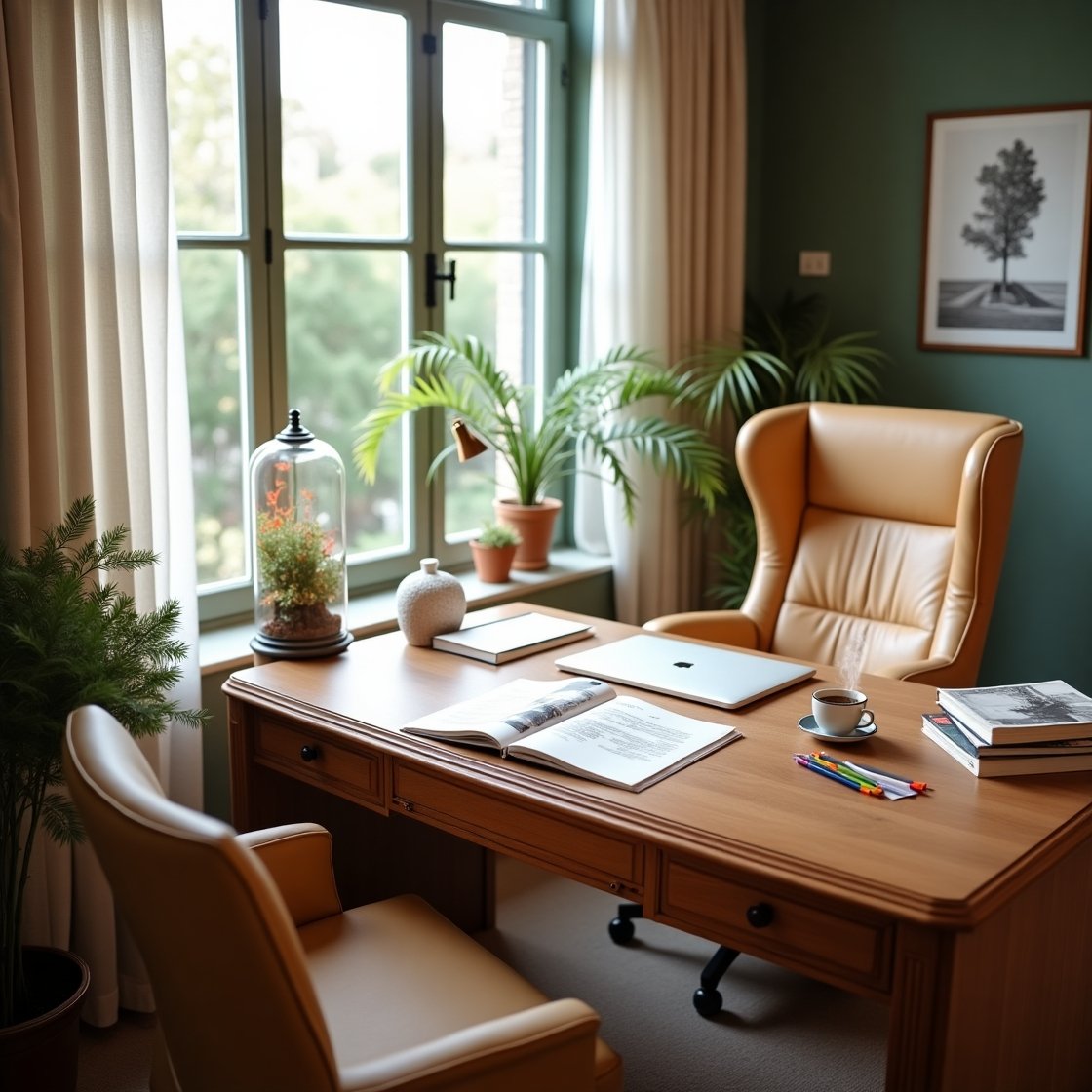Whether you’re working remotely full-time or just need a quiet place to focus and create, having a well-designed home office can make a huge difference in your productivity, comfort, and mood. The perfect home office isn’t just about having a desk—it’s about creating an environment that’s both functional and inspiring.
In this article, you’ll learn how to set up a home office that works for your needs and feels like a space you want to spend time in—without sacrificing comfort or style.
1. Choose the Right Location
Your home office doesn’t need to be a separate room, but it should be a dedicated space with as few distractions as possible.
Options include:
- A spare bedroom
- A quiet corner in the living room
- A walk-in closet turned office nook
- An attic or basement conversion
- A desk by a sunny window
Wherever it is, make sure it feels separate from your relaxation areas to support better focus.
2. Invest in a Comfortable Chair
You might be tempted to use a dining chair, but if you’re working long hours, your chair matters a lot.
Look for:
- Adjustable height and tilt
- Lumbar support
- Cushioned seat and backrest
- Swivel and wheels for flexibility
If you want a design-forward look, there are many stylish ergonomic chairs available that blend comfort and aesthetic.
3. Let There Be (Good) Light
Lighting has a huge impact on energy, focus, and eye health.
Tips for optimal lighting:
- Position your desk near natural light, if possible
- Use a desk lamp with adjustable arms and warm white bulbs
- Layer lighting with an overhead fixture or wall sconce
Avoid relying on overhead light alone, and reduce glare from screens by adjusting your setup as needed.
4. Keep Your Desk Clutter-Free
A messy workspace leads to a messy mind. Keep only the essentials on your desk:
- Laptop or monitor
- Notepad and pens
- A cup for water or coffee
- A desk lamp
- One or two small personal items (photo frame, plant, or candle)
Use desk organizers, drawers, or trays to store everything else. A tidy desk helps you start each day with clarity.
5. Add Storage That Works for You
Even in a small office, storage is essential for staying organized and focused.
Ideas:
- Floating shelves above the desk
- A rolling cart for flexible storage
- A filing cabinet disguised as a side table
- Storage boxes that match your color scheme
- Drawer organizers to avoid the dreaded “junk drawer”
Having a place for everything reduces stress and visual clutter.
6. Use Plants to Bring Life and Calm
A little greenery can go a long way in your workspace.
Benefits of adding plants:
- Improve air quality
- Reduce stress
- Boost focus and creativity
Easy-care office plants include:
- Snake plant
- Pothos
- ZZ plant
- Aloe vera
- Peace lily
Place a small plant on your desk or a tall one in the corner for visual interest.
7. Make It Personal (But Not Distracting)
Your home office should reflect your personality, but keep decor minimal and motivating.
Add:
- One or two framed prints or photos
- A vision board or pinboard
- Inspiring quotes
- A beautiful calendar or planner
- Functional yet stylish accessories (e.g., a marble pencil cup, wooden trays)
Keep the focus on calm, clarity, and creativity—not distraction.
8. Use Color to Boost Your Mood
Color has a strong impact on your mindset. Use tones that enhance your focus or calm you down, depending on your work style.
Recommended colors:
- Blues: Focus and tranquility
- Greens: Balance and growth
- Soft neutrals: Calm and clean
- Yellows (in moderation): Creativity and optimism
Avoid overly bright or saturated colors that can feel chaotic or tiring over time.
9. Optimize for Tech and Cables
Wires and cords can make a beautiful space feel cluttered fast.
Tips:
- Use cable management clips or boxes
- Choose a wireless keyboard and mouse
- Mount a power strip under the desk
- Keep chargers and accessories in labeled drawers or baskets
A clean, streamlined tech setup looks better and functions better, too.
10. Set Boundaries Between Work and Life
One of the biggest challenges of working from home is knowing when to switch off. Set physical and mental boundaries to maintain balance.
Ideas:
- Turn off your computer and close your notebook at the end of the day
- Light a candle or play music to signal “work mode” and “home mode”
- If possible, close the door or use a room divider to separate the space
- Avoid checking emails from your bed or sofa
Creating separation helps you recharge and avoid burnout.
Your Work-From-Home Space, Reimagined
A cozy, functional home office doesn’t need to be large or expensive. With the right lighting, storage, and style, you can create a space that’s productive, peaceful, and perfectly you.
Remember:
- Choose a quiet, well-lit area
- Prioritize ergonomics and comfort
- Keep things organized and clutter-free
- Add personality without creating distraction
- Use color, plants, and smart storage to enhance the space
When your home office feels good, your work gets better, too.
